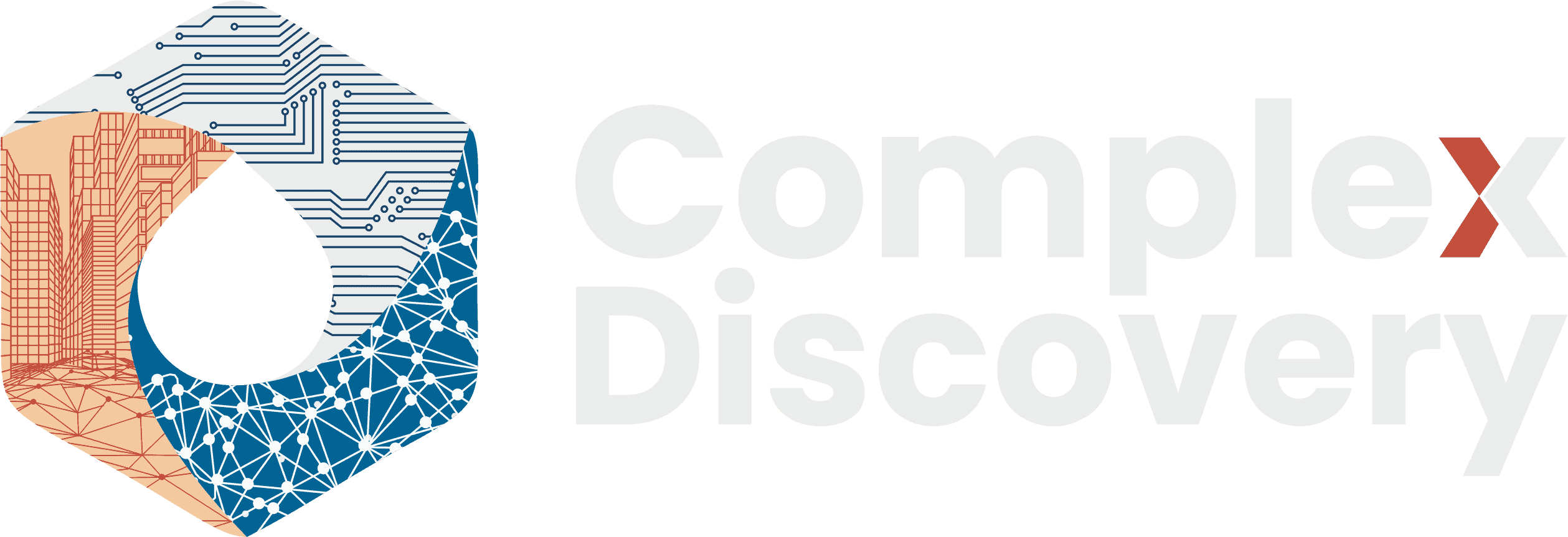Editor’s Note: The latest edition of Wolters Kluwer’s LegalVIEW Insights report—Volume 2025-1—offers a detailed analysis of rate trends through the first quarter of 2025, based on more than $200 billion in anonymized legal invoice data. While the report shows signs of moderation in some firm tiers and practice areas, it also highlights sharp increases in high-demand sectors like consumer services, intellectual property, and regulatory compliance.
This article explores what these rate dynamics mean for legal tech and eDiscovery providers. As law firms push rates higher, vendors positioned as cost-control solutions must decide whether rising internal costs justify pricing changes of their own. Yet, unlike law firms, tech providers face different market pressures—more direct competition, contract lock-ins, and ROI expectations that leave little room for unsubstantiated increases.
By blending data interpretation with strategic guidance, this article offers a timely lens for legal operations, procurement leaders, and technology vendors seeking to navigate the shifting intersection of legal cost, value, and vendor economics.
Content Assessment: Legal Rate Inflation Pressures Legal Tech and eDiscovery Pricing Strategies
Information - 93%
Insight - 92%
Relevance - 92%
Objectivity - 93%
Authority - 94%
93%
Excellent
A short percentage-based assessment of the qualitative benefit expressed as a percentage of positive reception of the recent article from ComplexDiscovery OÜ titled, "Legal Rate Inflation Pressures Legal Tech and eDiscovery Pricing Strategies."
Industry News – eDiscovery Beat
Legal Rate Inflation Pressures Legal Tech and eDiscovery Pricing Strategies
ComplexDiscovery Staff
Some Am Law 25 partners are now billing $2,105 per hour—particularly in the consumer services sector, where demand, regulatory pressure, and specialized talent are driving dramatic pricing. But while that rate grabs attention, new data from Wolters Kluwer suggests a more nuanced landscape. According to the company’s latest report, LegalVIEW Insights Volume 2025-1, legal billing rates continue to rise across firm tiers and roles, though the pace of increases may be softening for now.
Legal Billing Rates Continue Their Climb
The report reveals that the average partner billing rate at Am Law 25 firms stands at $1,349 per hour, while the blended hourly rate for all timekeeper roles at those firms has now reached $1,027. That blended rate marks a 7.5 percent increase in the first quarter of 2025 alone. Even as some firms show signs of moderation, others—particularly in high-demand industries like consumer services, finance, and regulatory compliance—continue to escalate rates aggressively.
In 2024, the mean hourly rate across all timekeepers hit $627, a $50 jump from 2022. While the overall increase may appear moderate at 6 percent, that average includes rates that remained flat or decreased. Among timekeepers who actually increased their billing rates, the average jump in 2024 exceeded 12 percent. Early data from 2025 indicate that this trend is continuing, with rate increases among active timekeepers already averaging more than 8 percent, even as nearly 40 percent of all rates have yet to be adjusted.
The sharpest increases continue to cluster in specific areas. Am Law 51–100 firms, often viewed as cost-conscious alternatives, recorded the largest increase so far in 2025 at 8.6 percent. And in a few notable pockets, rate inflation has accelerated at an extraordinary pace. For example, partner rates at Am Law 25 firms serving consumer services clients surged by 22 percent year-over-year to reach $2,105. These elevated rates reflect not only sector complexity but also the intense competition for senior legal talent in those areas.
Similar trends were observed for associates, especially in industries such as healthcare, industrials, and consumer services. In 2024, associates at Am Law top 50 firms averaged $835 per hour—an increase of nearly 12 percent year-over-year. Senior associates with seven or more years of experience neared the $1,000 threshold. That trend shows no signs of stopping. In early 2025, associate rates for consumer services work rose another 18.7 percent.
Behind the Numbers: Volumes, Data, and Methodology
Beneath these rate increases lies a troubling dynamic: matter volumes aren’t keeping pace. In consumer services, Am Law 51–100 firms saw matter counts decline 13 percent even as rates jumped 15.8 percent, resulting in 42 percent higher spend on less work. This increase suggests corporate legal departments are accepting steep rate increases while simultaneously reducing their reliance on outside counsel. This pattern could accelerate adoption of alternative legal service providers and technology solutions.
Behind these numbers lies a rigorous methodology. Unlike surveys that rely on self-reported data, the LegalVIEW Insights series analyzes actual, approved legal invoice data from Wolters Kluwer ELM Solutions’ client base. This data includes over $200 billion in legal spend from medium-to-enterprise-sized companies. The report covers services rendered between January 2022 and March 2025. To ensure analytical consistency, insurance defense data was excluded from most comparisons, and early 2025 data is presented with caution, as invoice approvals typically lag by up to 90 days.
Implications for Legal Tech and eDiscovery Vendors
These rate dynamics create ripple effects throughout the legal ecosystem. As corporate legal departments grapple with rising external counsel costs, they’re looking more critically at every line item in their budgets—including the technology platforms and service providers they’ve traditionally relied on to control those very costs. This fact presents both an opportunity and a challenge for legal technology and eDiscovery vendors.
On one hand, the mounting pressure from law firm rate increases makes cost-control tools more valuable than ever. Legal departments need sophisticated spend analytics, matter management systems, and workflow automation to navigate this inflationary environment. On the other hand, these same vendors face their own rising costs—from talent retention to infrastructure to AI development—and must decide whether the current market dynamics justify their own pricing adjustments.
The temptation to follow law firms’ lead on pricing is understandable. With firms justifying double-digit increases based on talent retention, regulatory demand, and innovation, legal tech vendors might reasonably ask whether they deserve similar consideration. After all, their platforms have become mission-critical infrastructure for modern legal operations.
Strategic Pricing in an Asymmetric Market
However, legal tech vendors face fundamentally different market dynamics than law firms, creating unique risks for any pricing strategy. Substitution risk is high: unlike law firms, where switching costs and relationship capital create stickiness, legal tech platforms face direct competition and lower barriers to exit. A 10 percent price increase could easily trigger an RFP process—an outcome law firms rarely face for ongoing matters. Many enterprise legal tech contracts are locked into three-to five-year terms with fixed renewal pricing. This structure limits pricing flexibility and means that vendors absorbing today’s inflation may not have another chance to adjust until 2027 or later. There is also intense ROI pressure. Legal departments justify tech spending based on quantifiable value. If a vendor raises prices by 8 percent but can only demonstrate 5 percent in savings, the perceived gap may put renewals at risk. Finally, there is market timing complexity. Because legal billing data carries a 90-day lag, vendors basing pricing decisions on early signals of moderation in 2025 may be misled. If updated figures reveal a reacceleration, early moves could backfire—either by locking in too-conservative pricing or by misjudging client appetite for cost increases.
To navigate this moment, vendors may need to pursue creative models over simple rate adjustments. Performance-based pricing, success fees linked to demonstrable client savings, or hybrid models that share risk and reward could offer more strategic alignment. These approaches would allow tech providers to account for rising internal costs while reinforcing their role as partners in cost control—rather than contributors to cost creep.
For eDiscovery providers, the stakes are even sharper. Rising data volumes, international investigations, and regulatory scrutiny have elevated their role in legal response planning. Yet they, too, face higher infrastructure, AI model maintenance, and support demands. While law firms may cite complexity to justify rate hikes, eDiscovery vendors must provide quantifiable speed, accuracy, or cost-avoidance metrics in return.
The new benchmarks set by top-tier law firms demand a response, but that response must account for fundamental differences in market position. Law firms can point to talent scarcity, regulatory complexity, and specialized expertise to justify increases. Legal tech vendors must navigate a more complex calculation: balancing their own rising costs against the need to maintain their value proposition as cost-control solutions.
The path forward likely requires creativity rather than simple rate adjustments. Performance-linked pricing, efficiency guarantees, or outcome-based models may offer a clearer bridge between rising input costs and sustained client value.
If legal departments are expected to absorb and adapt to evolving rate environments, the technology and services that power them must evolve too—but with a strategy that reflects both the opportunity and the asymmetry.
News Sources
- Wolters Kluwer ELM Solutions. (2025). LegalVIEW Insights Volume 2025-1: Benchmarking Through Complexity.
- Wolters Kluwer Press Release, August 2025: “Wolters Kluwer study suggests a complex and volatile environment for legal rates.”
Assisted by GAI and LLM Technologies
Additional Reading
- The Front Door of eDiscovery: Forensic Pricing Insights from the Summer 2025 eDiscovery Survey
- When Legal Privilege Isn’t Enough: Cyber Threats Escalate in the Legal Industry
- From Castle Rock to Cybersecurity: Edinburgh Insights for ILTACON 2025
Source: ComplexDiscovery









































